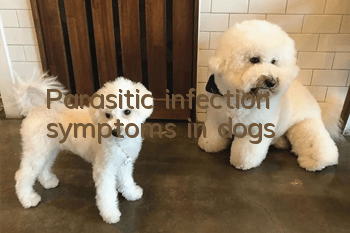Parasitic infection symptoms in dogs

Dog parasitic infections are divided into external infections and internal infections. The main symptoms of dogs infected with ectoparasites include skin itching, redness, swelling, hair loss, and increased dandruff. In severe cases, skin ulceration, scabs, secondary infection, and inflammation may occur. If a dog is infected with internal parasites, the main clinical symptoms include loss of appetite, vomiting, diarrhea, weight loss, blood in the feces, and sometimes adult worms are excreted in the vomit and feces.
1. Symptoms of dogs infected with external parasites
Dog external parasites are usually visible to the naked eye, and common ones include fleas, scabies mites, ticks, lice, etc., which are attached to the dog's fur. If a dog is infected with ectoparasites, it may have symptoms such as itchy skin, redness and swelling of the affected area, pimples on the skin, and frequent scratching of the skin.
2. Symptoms of dogs infected with internal parasites
Common internal parasites in dogs include roundworms, hookworms, tapeworms, etc. If a dog is infected with internal parasites, it may have symptoms such as vomiting, diarrhea, weight loss, and some dogs may even rub their buttocks. If there are too many parasites, your dog's vomit may contain parasites, adult worms, or eggs.
Note: In order to prevent dogs from being infected with parasites, owners should deworm their dogs regularly. It is generally recommended to do internal deworming every three months and external deworming every month.
- The old soldier trained five teddy dogs, Teddy dog training!
- What does it mean when a dog likes to nibble its owner?
- Is it okay to not feed a newborn puppy overnight?
- What is the reason why dogs whine and cry?
- When to train your dog to go to the toilet
- Causes of lipoma in dogs
- Common diseases of Corgi dogs
- How should a three-month-old German Shepherd be trained? Teach you how to train an obedient German Shepherd!
- What should I do if I don’t want to keep a dog? Come in and take a look if you don’t want to be fined!
- What to look out for when buying a Weimaraner puppy



